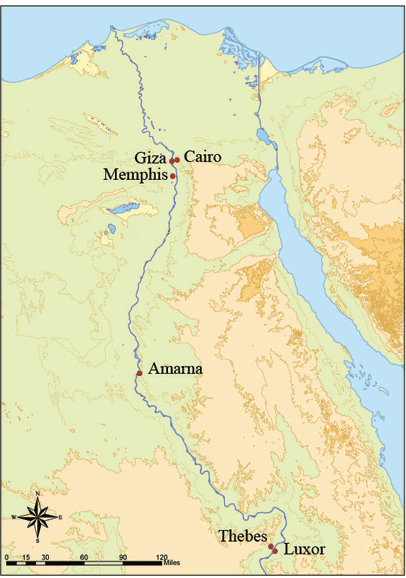Excerpt from Final Report S2E12
Here I provide my introduction to my final Write up for the semester. It is the context for the significance of my research and elaborates on some interesting background information on Amarna Egypt.
Introduction

Introduction
A cross-sectional study was performed on the skeletal remains found in Amarna Egypt. Amarna was the a capital city of Egypt established by the Pharaoh Akhetaten in 1348 BC and was later abandoned and demolished ~15 - 20 years later. Egypt at the time of Akhenaten had over 200 different cults, or religions to deities, the most influential being the cult of Amun. The priesthoods of the cults of Egypt were seperate spheres of power from the Pharaoh. The priests at the time held more welath and land than the Pharaoh himself and in some aspects where just as powerful (Mark, 2016). In an attempt for religious reform and to consolidate power Akhenaten outlawed all other cults except for the state sponsored cult of Aten (Mark, 2016). This had dastardly effects on Egytians personal lives and the economy (Mark, 2016). It is noted that Akhenaten is viewed as the heretic king in outlawing and persecuting other religions. The city of Amarna was established by Akhenaten as the new capital for the first state sponsored monotheistic god Aten, the sun disk. The city was placed strategically in between the two traditional capitols of Egypt, Memphis and Thebes. This was done so all government and religious officials had to go to Akhenaten in Amarna which was his undisputed sphere of influence.
After the death of Akhenaten his son Tutankhamun, King Tut, ascended the throne and the city of Amarna was abandoned. After the reign of Tutankhamun a military leader Horemheb seized power and made it the policy of his reign to reverse the religious reforms of Akhenaten and erase the name of Akhenaten from all written record. Amarna and Akhenaten were forgotten until the Amarna Letters were discovered in 1887 CE (Mark, 2017). The history and abandonment of the site allows archaeologists to look at skeletal remains from a very tight generation. Instead of looking at remains that spans hundreds to thousands of years this collection spans one to two generations. This is important because the data set allows more precision and a better view as to the condition of those who occupied Amarna. This study provides a better understanding of human bone loss through a select human life span.

Comments
Post a Comment